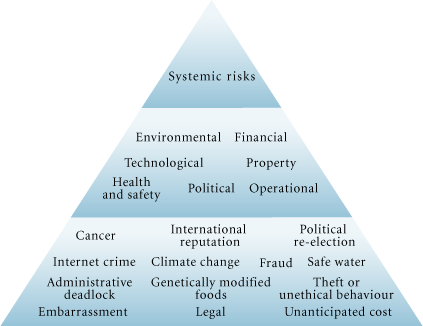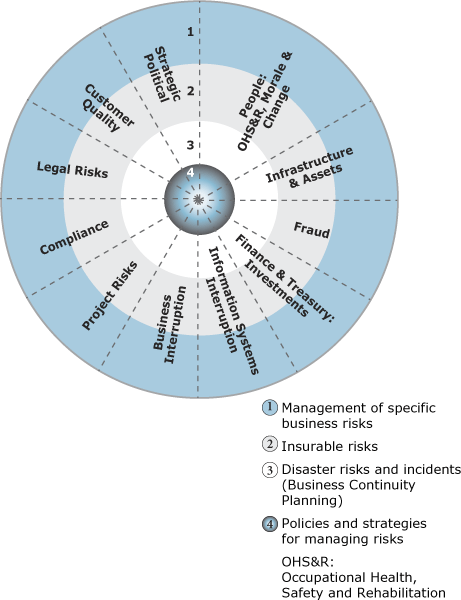Common menu bar links
Breadcrumb Trail
ARCHIVED - Integrated Risk Management Implementation Guide
 This page has been archived.
This page has been archived.
Archived Content
Information identified as archived on the Web is for reference, research or recordkeeping purposes. It has not been altered or updated after the date of archiving. Web pages that are archived on the Web are not subject to the Government of Canada Web Standards. As per the Communications Policy of the Government of Canada, you can request alternate formats on the "Contact Us" page.
Appendix E
Sample Risk Identification Lists

A hierarchy of possible risks. Cross-functional or interdisciplinary teams would be best suited to develop an inventory of potential risks in a holistic and comprehensive manner.
Source: Canadian Centre for Management Development, A Foundation for Developing Risk Management Learning Strategies in the Public Service (2001)
Potential Sources of Risk
| Description of Views or Perspective | Strategic
Perspective
Sources that can impede the achievement of mandate and objectives |
Business
Line Perspective
Sources that can impede the achievement of business line or program objectives |
Corporate
Management Perspective
Sources that may not effectively support the achievement of results |
Compliance
Perspective
Sources that could embarrass the organization or cause liabilities for not complying with laws and regulations |
Government
Agenda Perspective
Sources that are critical to ensure alignment with government-wide commitments |
|---|---|---|---|---|---|
| Sources of Risk | Strategic
|
Business Line
|
Corporate Management
|
Compliance
|
Governement Agenda
|
|
Source: Risk-based Internal Audit Priorities Toolset for Small Departments and Agencies (March 2003). Available at: http://www.tbs-sct.gc.ca/ia-vi/policies-politiques/priorities-priorites/priorities-priorites-eng.pdf |
|||||
|

